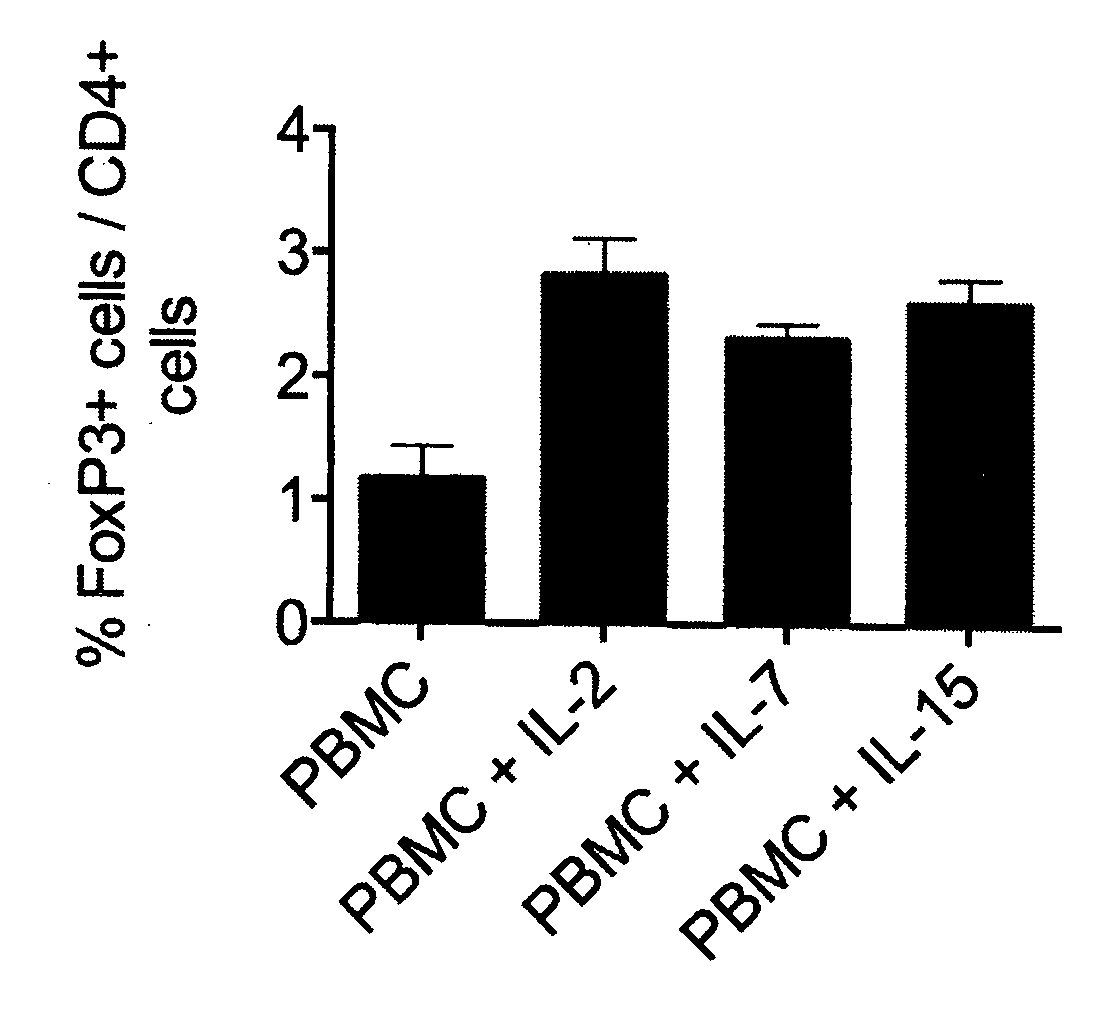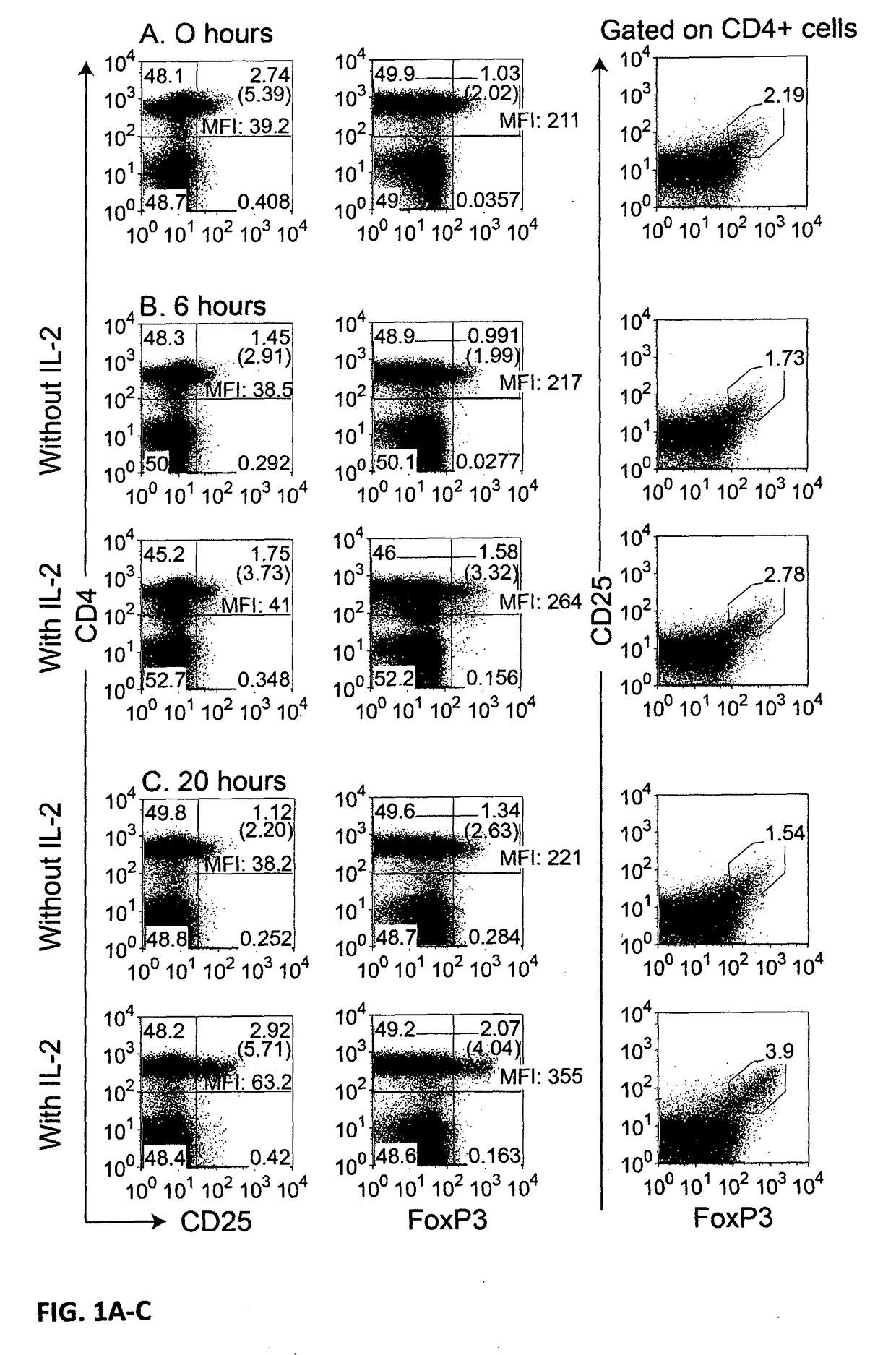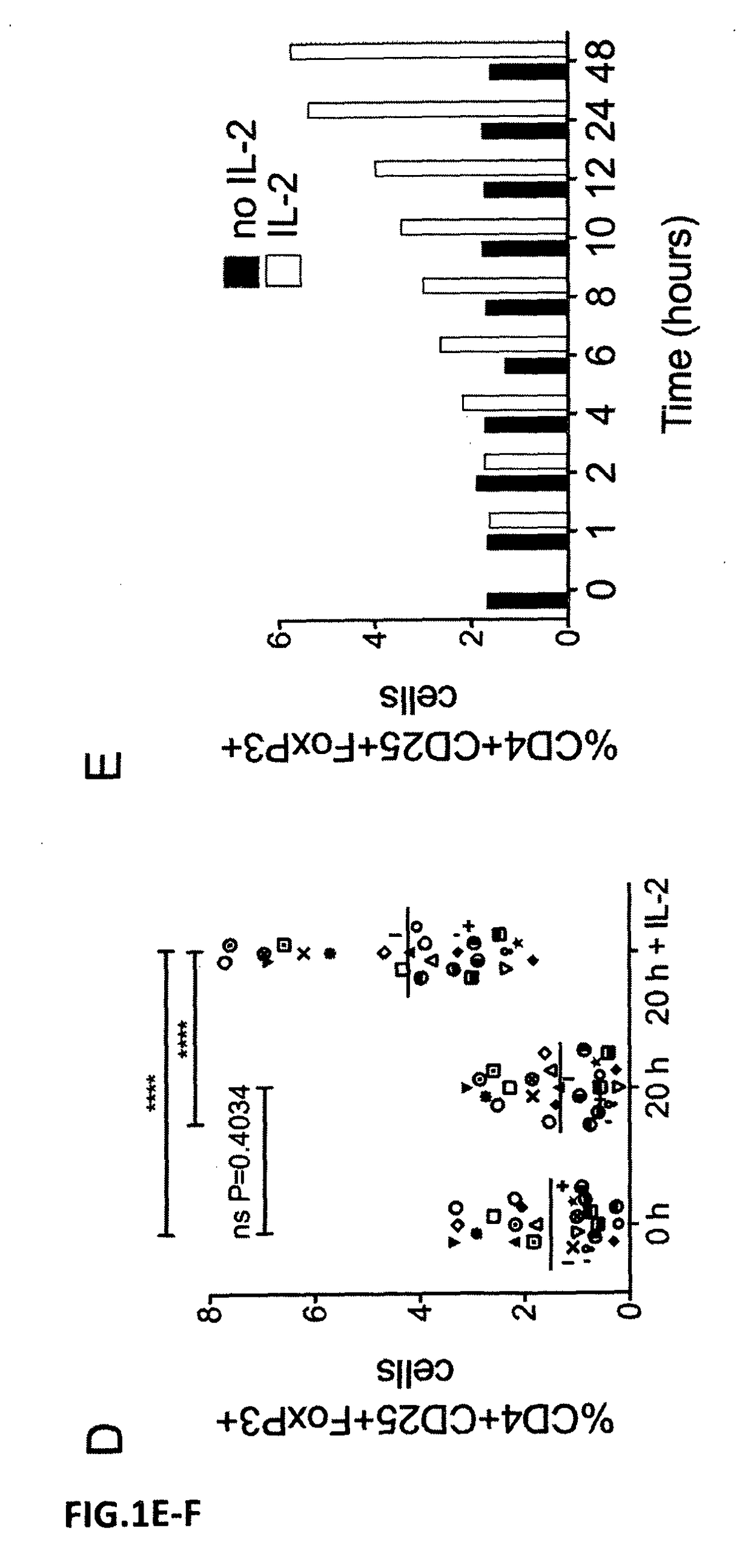Method for the identification of transiently FOXP3 negative regulatory t-cells from human peripheral blood
- Summary
- Abstract
- Description
- Claims
- Application Information
AI Technical Summary
Benefits of technology
Problems solved by technology
Method used
Image
Examples
example 1
VE EXAMPLE USING CONVENTIONAL TREG ANALYSIS AND THE PROTOCOL OF THE INVENTION STARTING WITH FRESHLY ISOLATED PBMC
[0045]For the determination of Treg frequencies, the present invention as well as conventional state-of-the-art measurements use PBMC isolated from heparinized venous blood by centrifugation over a density gradient (lymphocyte separation medium Pancoll human, PAN-BIOTECH GmbH, Aidenbach, Germany) following the manufacturer's instructions.
[0046]PBMCs were cultured in 96-, 48-, or 24-well tissue culture plates (Greiner bio-one, Frickenhausen, Germany), in which 0.2, 0.5, or 1 ml of cells adjusted to 1 Mio / ml were cultured per well in the three types of wells mentioned, using enriched RPMI 1640 culture medium (GIBCO / Invitrogen, Long Island, N.Y., USA) supplemented with 10% autologous serum or commercially available pooled human AB serum (Sigma-Aldrich), with essentially the same results.
[0047]The frequency of Treg cells was determined by 3-colour immunofluorescence and flow ...
example 2
AND CYTOKINE REQUIREMENTS FOR THE RECOVERY OF FOXP3 EXPRESSION
[0053]The experiment shown in FIG. 2 asked the question whether the recovery of Foxp3 expression requires additional cell types such as monocytes contained within the PBMC preparation, and whether additional cytokines beyond IL-2, which activate the STAT5 pathway of signal transduction, would be able to promote recovery of Foxp3 expression. FIG. 2A shows results obtained with unseparated PBMC and FIG. 2B results from purified CD4 positive cells. CD4 T-cells were purified by using a CD4 T-cell purification kit (CD4+ T Cell Isolation Kit II, Miltenyl Biotec) and were then cultured as given in previous experiments for 20 hours in the presence of 200 U / ml IL-2, 20 pg / ml IL-7, or 20 pg / ml IL-15, before determining the frequency of Foxp3+ cells among CD4 T-cells. It is apparent that Foxp3 negative Treg cells contained within the CD4 T-cell population are able to respond to IL-2 with re-expression of Foxp3. Surprisingly, IL-7 an...
example 3
ONSE RELATIONSHIP
[0054]PBMC were cultured with titrated concentrations of IL-2 for 20 hours as in Example 1. Frequencies of Foxp3+CD25+ cells within the CD4 T-cell compartment were determined as in example 1, and are graphically displayed in FIG. 3. It is found that an increase in detectable Treg cells is apparent with as little as 6.25 U / ml of IL-2, followed by a dose-dependent further increase.
PUM
| Property | Measurement | Unit |
|---|---|---|
| Time | aaaaa | aaaaa |
| Time | aaaaa | aaaaa |
| Time | aaaaa | aaaaa |
Abstract
Description
Claims
Application Information
 Login to View More
Login to View More - R&D Engineer
- R&D Manager
- IP Professional
- Industry Leading Data Capabilities
- Powerful AI technology
- Patent DNA Extraction
Browse by: Latest US Patents, China's latest patents, Technical Efficacy Thesaurus, Application Domain, Technology Topic, Popular Technical Reports.
© 2024 PatSnap. All rights reserved.Legal|Privacy policy|Modern Slavery Act Transparency Statement|Sitemap|About US| Contact US: help@patsnap.com










